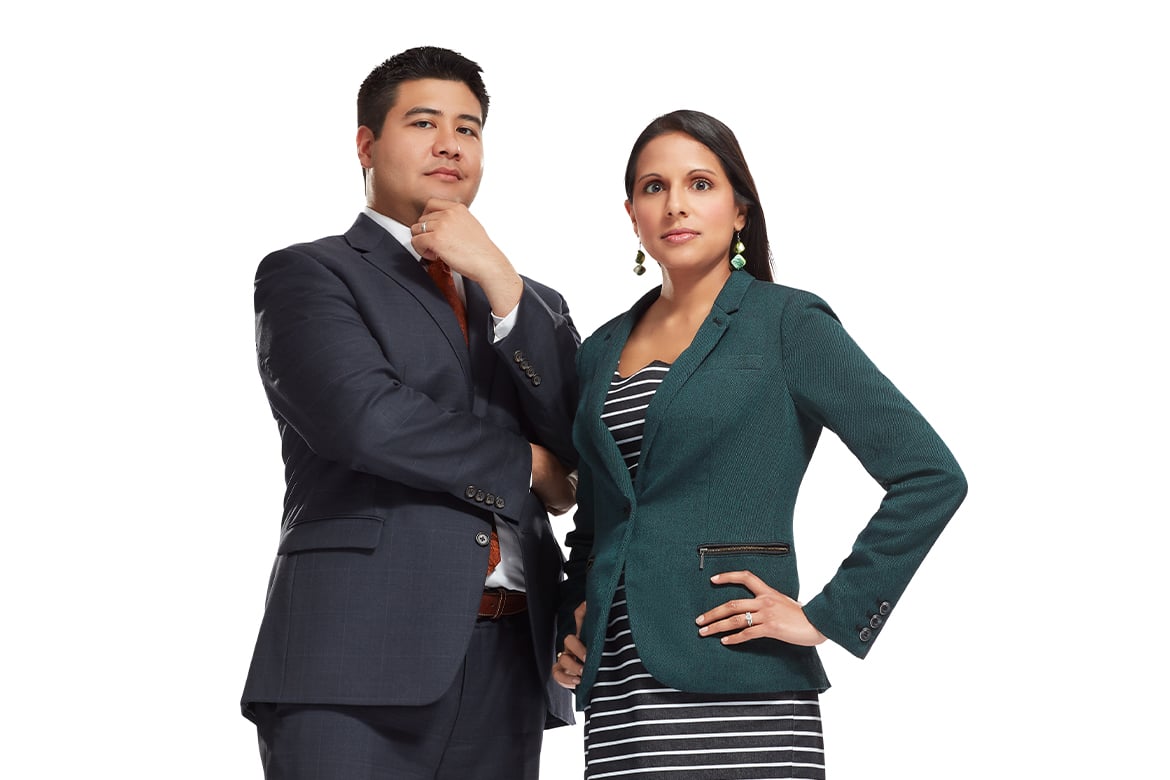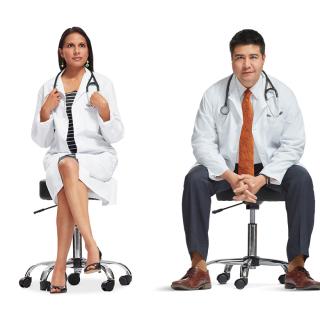The fight against burnout takes on many forms. Hans and Kavita Arora, a physician couple with a passion for organized medicine, find it works best with a partner on the front lines.
Call it a consult or a sidebar, physicians often ask each other for advice. What’s different about when Hans and Kavita Arora doing it, is that it often takes place across the dinner table.
“If I have a question related to a pregnant patient with a urological issue I would of course ask Kavita for advice about how she would approach a particular issue in that situation,” says Hans Arora, MD, a urology resident at the Cleveland Clinic.
Kavita Arora, MD, MBE, MS is an ob-gyn at Case Western Reserve University’s MetroHealth Medical Center in Cleveland. She is also Hans’ wife.
“We are generally involved in the same body region, so there's a lot of overlap in our fields,” she says. “Even though we're at different hospitals in different phases of our careers, there's a lot of discussion and shared terminology.”
Finding love in organized medicine
Kavita and Hans first crossed paths at the 2007 AMA Interim Meeting in Honolulu. A friendship blossomed into a romantic relationship and they dated for four years before getting married in 2011.
Though they met at the same stages of medical school, Hans was pursuing an MD/PHD. His extended undergraduate medical education training and their desire to be together once things got serious caused Kavita to transfer residency programs, moving from Philadelphia to Chicago. As Kavita finished residency and Hans completed medical school, they again navigated the geography of their careers in tandem.
“That whole process of looking for our next step, there were certainly a lot of compromises,” Hans says. “There were certain places I simply couldn't rank very highly, whether or not I liked the program simply because there wasn't a good job opportunity for Kavita. Similarly, she really had to focus her list on cities in which I had interviews.”
This flexibility continues to be a necessary component of making their relationship work. Next year, Hans will leave Cleveland, where Kavita will stay with the couple’s two children. He will spend most of his days training for a fellowship in Chicago, returning home on his days off.
“What is tricky about compromise in a medical marriage it that a little bit of it is out of your control,” Kavita says. “If it was two of us in practice, so at the same phase of our career, I think it would have been in some ways a little bit more conventional.
“I also don't think it's a time-limited or one-time thing. I think this is something that all relationships face as careers progress and more and more relationships are dual-career relationships now compared to the conventional solo breadwinner families.”
Leaning on each other
About 40 percent of physicians are likely to marry another physician or health professional, according to an AMA Insurance Agency Inc. survey of nearly 5,000 doctors.
One study found, however, that having a spouse or partner who works as a non-physician health care professional increases the odds of burnout by 23 percent. Couple that anecdotal evidence with the fact that about half of physicians report at least one symptom of burnout, there is bound to be some overlap in physician couples and burnout.
Generally, physicians experiencing burnout are feeling at least one of three symptoms listed on the Maslach Burnout Inventory—emotional exhaustion, depersonalization and a lost sense of personal accomplishment. As physicians under the age of 55 with children under the age of 21, the Aroras, demographically, are in line for some of the bigger risk factors associated with those experiencing burnout.
So, how do they fight burnout? They do it together.
“A big part of burnout is feeling frustrated due to a perceived lack of impact,” Kavita says. “Physicians are frustrated about all the administrative hassles, the legislative interference in medicine, or the decline in a patient-physician relationship, you name it, a frustration and a feeling of a lack of impact. And I think we can bounce things off each other and decrease the frustration through our shared experience and remind each other of the impact that we have.”
In a practical sense, that means relating to the ups and downs. Those stakes can be particularly high since both are often involved in surgeries where the range of outcomes is vast.
“The patient-physician relationship is special, but I think the surgeon-patient relationship is distinct in many ways,” Kavita says. “People trust us with actually hurting them in order to help them and the stressors at play as well as what that involves if you've had a bad day are very unique to the surgical fields. Knowing that when someone's had a bad day in the OR and how that would feel to you, I think is a shared language and a shared understanding that is helpful.”
As physicians in demanding specialties, both Hans and Kavita give patients much of their physical and emotional energy. The fact that they understand the nature of working under those conditions, is a plus that a non-physician partner may not grasp.
“In any field that requires not just a time commitment, but an emotional investment in your work, your cup can only be so full,” Kavita says. “There may at times feel like there’s less of that to go around. In order to be successful, both partners have to be mindful of that situation.”
Common passions
The shared experiences the Aroras tout as a benefit of a two-physician marriage are apparent in a number of arenas. Among the most prominent, both husband and wife say, is their collective involvement in advocacy through the AMA.
“It's another way to make an impact that is really meaningful to us,” Kavita says. “We've been involved and shared that experience for a long time and many of our friends and colleagues are involved as well. It's a nice, nice support system in that regard.”
Hans adds that “It is great learning what issues the other person finds especially important. Sometimes it is what we would have predicted after more than a decade of involvement in the AMA together, and other times it is not.”
Because of the similarity of their specialties, they tend to have many of the same clinical policy interests, working together on AMA policies related to cancer screening and surgery on minors. Outside of their clinical common ground, their perspectives as a dual-physician couple with children has led them to offer reference committee testimony on issues such as the residency match process and common-sense gun control for safer schools.
“We have a shared vision of medicine as occurring not solely in the exam room or operating table, but also in the halls of Congress,” Kavita says. “Working together in the AMA is much more than a shared hobby in that sense. It is not only a shared experience, but a shared community and a shared purpose.”
Making family the top priority
Of course, the couple’s biggest shared passion is for their family. And with demanding schedules, finding quality time can get difficult.
“I think it informs the kind of physicians we are and the kind of partners we are to each other,” Hans says. “We're better physicians because we’re parents, and I think we're better partners because we're parents. It's another shared experience, goal, and value system that we have together.”
The couple tries to schedule family time—with their children, who are ages 3 and six months—and date nights for each other on a regular basis. The range of activities they try to schedule include playing a board game, watching movies and dining out. They also take a couple of vacations annually.
“One of the things about our profession is that there's always more work to be done and your day doesn't end when you leave the hospital,” Hans says. “There are always charts to finish, patients to look up, papers to write, books to read.”
“In order to make a relationship work between two busy professionals, you really do have to carve out some protected time for yourselves, and prioritize it,” he says. “If you're going to put so much energy into your work, you have to put that same energy into the relationship, as difficult as that may seem at times.”
“For me, my family may not always come first, but they're the most important thing in my life,” Kavita said. “And that seems counter-intuitive or impossible at first, but in medicine, your patients come first … I might be with a laboring patient or he may be stuck in the operating room and so you may have to miss things or come home later than expected. It's helpful to be with somebody who understands that paradox.”





